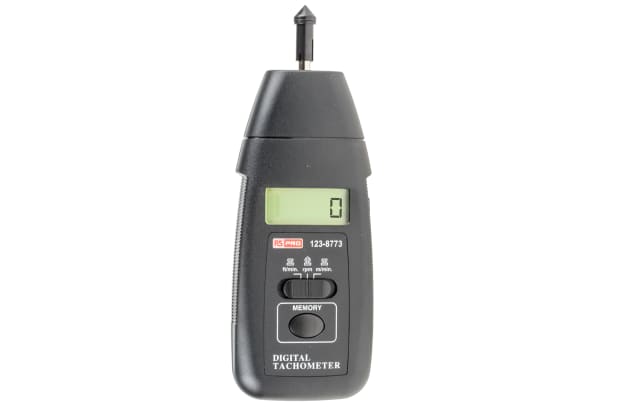How to Select the Right Tachometer for Your Automobile or Motorcycle
How to Select the Right Tachometer for Your Automobile or Motorcycle
Blog Article
The Value of a Tachometer in Monitoring Engine Speed and Efficiency in Automotive Applications
In the realm of automotive engineering, the tachometer stands as a pivotal tool in the driver's collection, offering a straight window into the internal workings of a lorry's engine. Past its function as a simple scale of revolutions per minute (RPM), the tachometer offers as an important tool for lovers and professionals alike, providing real-time understandings into engine performance and health and wellness. Recognizing the value of this device exceeds surface-level monitorings, delving into the elaborate partnership in between engine rate, power outcome, and general driving experience. As we discover the multifaceted role of the tachometer in vehicle applications, a much deeper gratitude for its effect on automobile characteristics and performance begins to emerge.
Importance of Monitoring Engine RPM
Keeping track of engine RPM, or revolutions per minute, is a crucial aspect of automotive upkeep and efficiency assessment. Engine RPM directly associates with the rate at which the engine's crankshaft turns, indicating just how swiftly the engine is running - tachometer. By monitoring RPM, technicians can analyze the health of the engine, detect possible problems, and fine-tune efficiency. An unusual RPM analysis might signify issues such as engine misfires, defective spark plugs, or concerns with the gas shipment system. Continually high RPM analyses could indicate hostile driving habits or the demand for a greater gear shift to improve fuel efficiency.
Furthermore, keeping an eye on engine RPM is important for efficiency examination in racing and high-performance automobiles. Preserving optimal RPM levels is vital for attaining peak power outcome and acceleration. Racers usually use tachometers to guarantee they are running within the excellent RPM range for maximum efficiency. In recap, keeping an eye on engine RPM is not only crucial for spotting issues yet additionally for maximizing engine performance in various vehicle applications.

Advantages of Real-Time Data
In automotive applications, real-time data plays a crucial duty in providing instantaneous insights into the performance and condition of the car. By continually monitoring various specifications such as engine rate, temperature level, fuel intake, and extra, real-time data uses many benefits that add to boosted efficiency and safety on the roadway.
One substantial advantage of real-time data is its ability to alert vehicle drivers and specialists to any abnormalities or concerns immediately. This aggressive strategy makes it possible for quick recognition of possible problems, allowing for timely interventions to avoid more damage or break downs. Furthermore, real-time data helps with performance optimization by supplying instant responses on driving routines and engine efficiency. Motorists can change their behavior in real-time based on this info to accomplish far better gas economic climate and prolong the lifespan of their lorry.

Moreover, real-time information plays a vital role in modern-day automotive diagnostics, enabling specialists to rapidly identify and resolve malfunctions. This leads to reduced downtime, reduced upkeep prices, and eventually, improved general car integrity and durability (tachometer). By taking advantage of the power of real-time information, vehicle stakeholders can make educated choices that positively impact both the efficiency and durability of the automobile
Impact on Gear Shifts
The tachometer plays a vital role in optimizing gear shifts by giving real-time engine speed data to the vehicle driver. When approaching the redline on the tachometer, it signals the motorist to upshift to protect against over-revving the engine and triggering possible damages.
Additionally, the tachometer aids in attaining smoother gear transitions, particularly in manual transmissions. By keeping track of engine speed, chauffeurs can execute equipment shifts at the ideal RPM array, decreasing snagging activities and reducing wear on the transmission elements. This precision on duty adjustments not only enhances driving comfort but additionally contributes to fuel performance.
Enhancing Gas Effectiveness
Given the vital duty the tachometer plays in maximizing gear shifts for efficiency and engine health pop over to this site and wellness, it straight adds to making the most of gas efficiency in auto applications. By supplying real-time feedback on engine rate, the tachometer aids chauffeurs in maintaining the most effective RPM range for gas economic situation. When motorists regularly monitor the tachometer and readjust their driving behaviors accordingly, they can avoid unnecessary fuel usage triggered by over-revving or lugging the engine.
Additionally, the tachometer aids vehicle drivers determine one of the most fuel-efficient equipment to be in at any given minute, avoiding the engine from functioning harder than required. This is particularly essential during velocity and travelling, where being in the ideal gear can substantially impact fuel performance. Furthermore, the tachometer can notify drivers to potential mechanical problems that can be negatively impacting fuel economy, such as a sliding clutch or a blocked air filter. To conclude, the tachometer functions as a useful tool in improving fuel efficiency by promoting optimum driving practices and determining locations for renovation in the vehicle's performance.

Taking Full Advantage Of Engine Long Life
The tachometer's role in checking engine speed and performance contributes in making certain the long life of vehicle engines. By making use of the tachometer properly, chauffeurs can enhance engine long life via conscious RPM management. Regularly revving an why not try here engine too high can cause excessive wear and tear on important parts, such as the pistons, valves, and bearings. Over time, this can cause lowered engine efficiency and possible malfunctions. Keeping track of the tachometer allows motorists to remain within the advised RPM variety for their vehicle, avoiding unneeded pressure on the engine and prolonging its life-span.

Conclusion
To conclude, the tachometer plays a vital duty in checking engine speed and performance in automobile applications. By supplying real-time data on RPM, it enables reliable equipment shifts, boosted gas performance, and made best use of engine longevity. This tool is important for keeping optimal engine performance and making certain the overall capability of a car.
Report this page